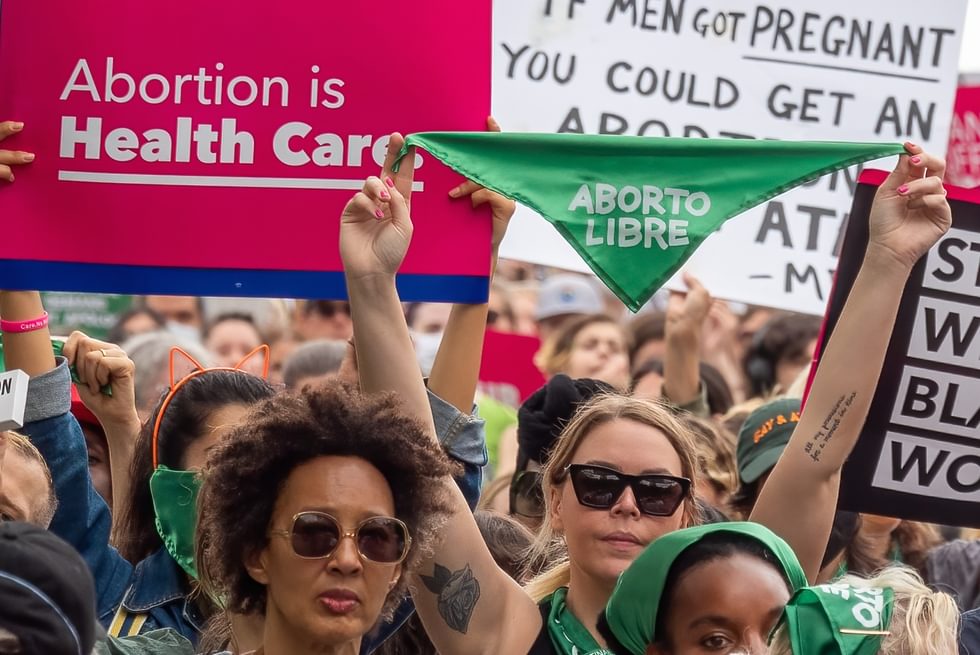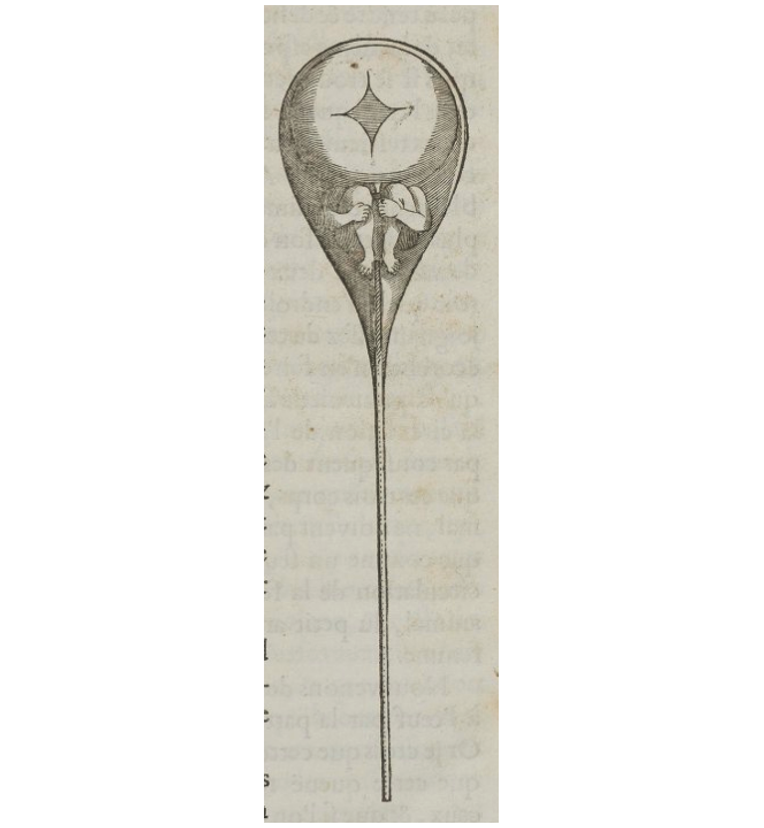What Is “Life” in Dobbs v. Jackson Women's Health Organization?
From the Series: After Roe
From the Series: After Roe

“What is life?” is a question recurrent in biology. In his 1944 book of that title, Erwin Schrödinger hypothesized that vitality might be carried by an aperiodic crystal containing a heritable, executable “code-script”—and a structure something like that was later discerned in DNA, scaffolding a tradition in which “life” has been conflated with genetic information and, indeed, origination. By the turn of the twenty-first century, however, scientists edged toward recognition that the “life” question was more metaphysical than empirical. “Life” was not a “natural kind” but rather a loose set of properties that may or may not overlap with the qualities of living things (Keller 2022). This view was taken in 2007 by the editors of Nature, who argued in an opinion piece entitled “Meanings of ‘Life’” that “life” was “a molecular process lacking moral thresholds at the level of the cell.” That view, they elaborated, “can and should be invoked to challenge characterizations of life that are sometimes used to defend religious dogma about the embryo. If this view undermines the notion that a ‘divine spark’ abruptly gives value to a fertilized egg—recognizing as it does that the formation of a new being is gradual, contingent, and precarious—then the role of the term ‘life’ in that debate might acquire the ambiguity that it has always warranted” (Nature 2007, 1032).
As an anthropologist of the biosciences, I had long employed this editorial in teaching, and I recalled it after the US Supreme Court ruling of June 2022 in Dobbs v. Jackson Women’s Health Organization, No. 19-1392, 597 U.S. What did Dobbs, a victory for people who named themselves “pro-life,” claim about “life”? Had the court’s ruling opinion, as Nature suggested such a position might, staked claims about “life” by leaning on bioscientific accounts of cellular formation?
Ruling in favor of Mississippi State Health Officer Thomas Dobbs’s claim that the state should be permitted to ban previability abortions on the basis that “viability” is contingent on technological infrastructure rather than properties of the fetus as such, the Supreme Court asserted that its decision was aimed at “protecting the life of the unborn,” a phrasing giving wide leeway to when “life” might be considered to begin. Although the court itself did not make specific declarations about the vitality of a zygote or embryo—instead gesturing to “potential life”[1]—Dobbs’s petition to the Court had urged that “advances in genetics and related fields make clear that a new and unique human being is formed at the moment of conception, when two cells, incapable of independent life, merge to form a single, individual human entity.”[2] While not invoking anything like a “divine spark,” this phrasing is saturated with value claims and implied moral thresholds—taking newness, uniqueness, independence, and individuality as obvious goods immanent in “genetics.”
In this vision, “life”—human life—is defined as beginning at the fusion of egg and sperm, a definition that renders pregnancy a principle at once subservient to “life” (life becoming essentially zygotic: gamete + gamete) as well as a process in need of control from outside to ensure its unfolding. As feminist anthropologists of reproduction have long observed, this view is continuous with a patriarchal idiom that has women’s bodies as vessels for men’s patrilineal legacy, their paternity (Delaney 1986; Martin 1991). It is resonant, too, with Aristotle’s fourth century BCE declaration in Generation of Animals that in procreation, “the male provides the ‘form’ and the ‘principle’ of movement, the female provides the body, in other words, the material” (Aristotle 1979). Although in our times, “female” providers of oocytes are now coequal contributors of (genetic) “form” (unless they are acting as “donors,” without legal recognition as parents), the coequal formulation retains a kind of sperm-equivalent principle as that which governs life’s origin, and, indeed, essence.
Antiabortion positions in the United States are further informed by Christian theology—particularly those traditions chartered by Thomas Aquinas (himself a commentator on Aristotle), who was concerned with the soul, that possession that, for Christians, makes a person a person. Aquinas held that “ensoulment” happens much later than conception (forty days for males, eighty for females, he said)—though he has lately been read as holding that conception itself sets up a potentiality continuous with the emergence of the soul (Amerini 2013). Compare this view to Jewish traditions that assign humanness at birth or at the thirteenth postnatal day (Schenker 2008) or think, indeed, of the range of cultural traditions that define personhood more processually than genetically.[3]
Nowadays, antiabortion advocates who call themselves pro-life sometimes seek confirmatory anchoring in genetics. The Catholic Exchange asserts: “It is very clear that if St. Thomas had lived in the modern scientific age of biology, genetics and sonograms he would have concluded beyond a doubt that life begins at conception.”[4] Far from being clear, however, genetics and sonograms are infused with cosmologies that imbue objects like DNA and the fetus with cultural meaning. The very notion that genes are potentiality or that fetuses float free from those who gestate them are rooted in histories of inheritance as fixed at origins and of pregnant people as containers.[5] “Life” becomes abstracted from the bodies in which it exists, thinning out to be a simple spark of creation, particularly in monotheistic religions that have God as Father. (Consider also the homunculus or preformed little person believed by Medieval alchemists—as well as some of their natural philosopher descendants, even into the 17th century [see Figure 1]—to live inside sperm, a kind of ancestor to the genetic reductionism called upon by Dobbs.) Historian Barbara Duden, in Disembodying Women, writes that “life” is a “four-letter word” that is “meaningless and loaded; it can barely be analysed, yet it is a declaration of war” (1993, 100). As Donna Haraway has argued, “Life itself is the psychic, cognitive, and material terrain of fetishism” (1997, 137), where fetishism is the assignation of life to things apart from the relations that make them exist.

What are the relations in which “life” exists for the Supreme Court? The key is in a phrasing that appears repeatedly in the majority opinion: “The State’s interest in protecting prenatal life.” Purporting to peer through a pregnant person’s body to see full ontological “life” even in the zygotic moment, this phrasing effectively declares the pregnant person to be a separate agent, antagonistic to embryo and fetus, who must be governed by a state that takes the place of a husband or Christian God. In the United States, that state too often leaves out of its vision of “protecting” life any meaningful commitment to public health, climate security, or, indeed, lives as they are actually lived.
[1] A term employed in Roe, which the Roberts Court quotes repeatedly, to imply that the phrase is a neutral one both sides recognize. The term is a sliding signifier, sometimes leveraged to press “life” to a point of minimal origin. Sandra Day O’Connor, who upheld Roe v. Wade, nonetheless wrote, in a dissenting opinion in City of Akron v. Akron Center for Reproductive Health, 462 U.S. 416, 461, “potential life is no less potential in the first weeks of pregnancy than it is at viability or afterward.” The dissenting opinion of Breyer, Sotomayor, and Kagan uses “life” primarily to speak of the life—the biography and health—of a woman. They turn, too, to Roe, which holds that a state should not “by adopting one theory of life,” override “all rights of the pregnant woman.”
[2] The citation trail points to Hamilton v. Scott, 97 So. 3d 728 (Ala. 2012), which quotes Ernest Blechschmidt, The Beginning of Human Life: “A human ovum possesses human characteristics as genetic carriers, not chicken or fish. This is now manifest; the evidence no longer allows a discussion as to if and when and in what month of ontogenesis a human being is formed. To be a human being is decided for an organism at the moment of fertilization of the ovum” (1977, 16–17). This reading of a fertilized human ovum as a “human being” compresses the entirely of “being” into the genome. It also poses humans as obviously distinct from “chicken or fish,” a view put at risk by research into the ways the human genetic heritage is, in fact, a patchwork of inheritances from other organisms (see Crisp et al. 2015).
[3] Schenker (2008) also reports: “The Babylonian Talmud Yevamot 69b states that: ‘the embryo is considered to be mere water until the fortieth day.’ Afterwards, it is considered subhuman until it is born.”
[4] The Supreme Court also points to prenatal imaging: “Many people now have a new appreciation of fetal life and that when prospective parents who want to have a child view a sonogram, they typically have no doubt that what they see is their daughter or son.” Sotomayor and Kagan’s dissent finds this claim an assumption, not an argument.
[5] On the “DNA mystique,” see Nelkin and Lindee (1995); on the rhetorical making of sonograms as portraits of persons, see Haraway (1997); Hartouni (1997); Morgan (2009); Taylor (1992).
Amerini, Fabrizio. 2013. Aquinas on the Beginning and End of Human Life. Translated by Mark Henninger. Cambridge, MA: Harvard University Press.
Aristotle. 1979. Generation of Animals. Translated by A. L. Peck. Cambridge, MA: Harvard University Press.
Blechschmidt, Ernest. 1977. The Beginnings of Human Life. Washington, DC: Transemantics.
Crisp, Alistair, Chiara Boschetti, Malcolm Perry, Alan Tunnacliff, and Gos Micklem 2015. “Expression of Multiple Horizontally Acquired Genes is a Hallmark of both Vertebrate and Invertebrate Genomes.” Genome Biology 16, no. 50.
Delaney, Carol. 1986. “The Meaning of Paternity and the Virgin Birth Debate.” Man 2, no. 3: 494–513.
Duden, Barbara. 1993. Disembodying Women: Perspectives on Pregnancy and the Unborn. Translated by Lee Hoinaki. Cambridge, MA: Harvard University Press.
Haraway, Donna. 1997. Modest_Witness@Second_Millenium.FemaleMan©_Meets_OncoMouse™: Feminism and Technoscience. New York: Routledge.
Hartouni, Valerie. 1997. Cultural Conceptions: On Reproductive Technologies and the Remaking of Life. Minneapolis: University of Minnesota Press.
Keller, Evelyn Fox. 2022. “Once Again, ‘What Is Life?’” In What Is Life? edited by Stefan Helmreich, Natasha Myers, Sophia Roosth, and Michael Rossi (Biogroop) in association with Katrin Klingan and Nick Houde, 117–22. Das Neue Alphabet (The New Alphabet), Volume 11. Leipzig: Spector Books.
Martin, Emily. 1991. “The Egg and the Sperm: How Science Has Constructed a Romance Based on Stereotypical Male-Female Roles.” Signs 16, no. 3: 485–501.
Morgan, Lynn. 2009. Icons of Life: A Cultural History of Human Embryos. Berkeley: University of California Press.
Nature editorial. 2007. “Meanings of ‘Life.’” Nature 447: 1031–32.
Nelkin, Dorothy, and M. Susan Lindee. 1995. The DNA Mystique: The Gene as a Cultural Icon. New York: W. H. Freeman.
Schenker, Joseph G. 2008. “The Beginning of Human Life: Status of Embryo: Perspectives in Halakha (Jewish Religious Law).” Journal of Assisted Reproduction and Genetics 25 (6): 271–76.
Schrödinger, Erwin. 1944. What Is Life? The Physical Aspect of the Living Cell. Cambridge: Cambridge University Press.
Taylor, Janelle S. 1992. “The Public Fetus and the Family Car: From Abortion Politics to a Volvo Advertisement.” Public Culture 4, no. 2: 167–83.